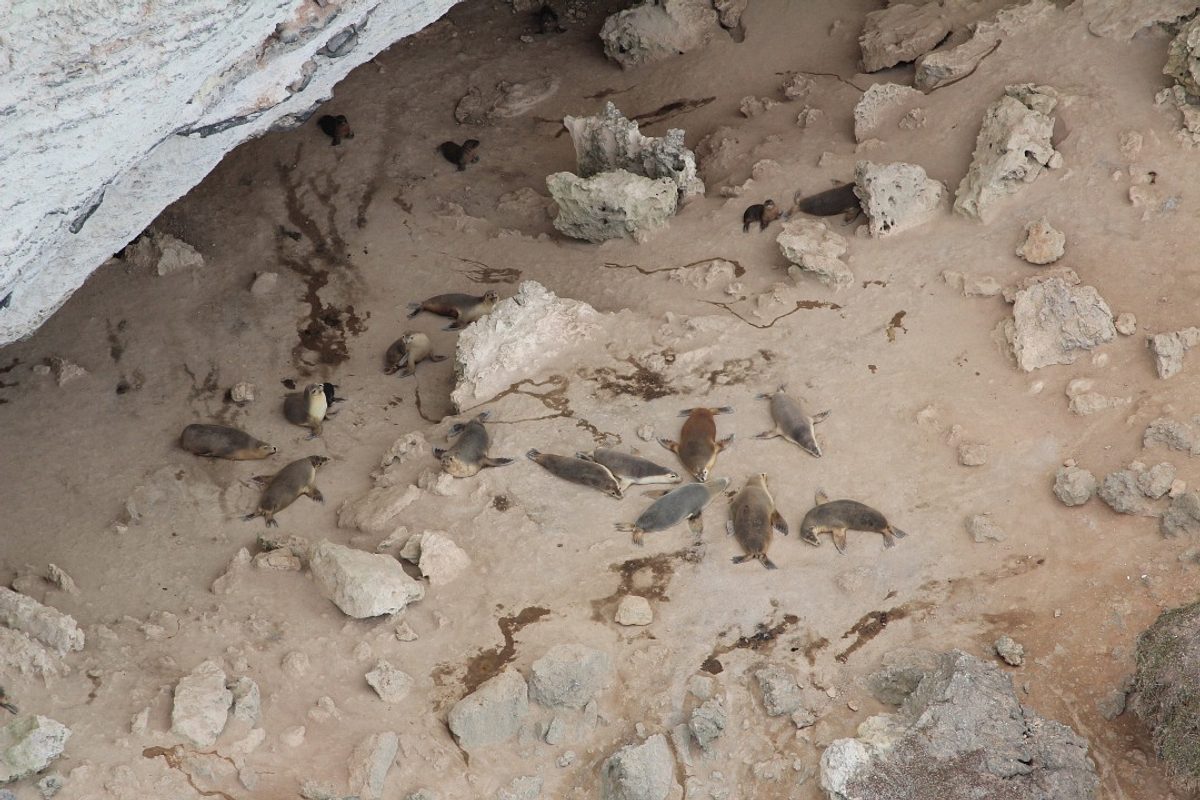
Now streaming: Doco shows how technology is helping track SA’s sea lion population
The Great Australian Bight is one of the last strongholds of the Australian sea lion, with 80 per cent of the species’ population found here, in South Australian waters.
The sea lions rest, breed and play in isolated colonies along the Bunda Cliffs and on offshore islands. To feed, adults leave on multi-day foraging trips that often take them into offshore waters of the Great Australian Bight, Western Eyre and Murat marine parks.
But did you know these amazing creatures have recently been nominated to have their conservation status upgraded to Endangered under the Environmental Protection and Biodiversity Conservation Act 1999 (EPBC Act) as there’s evidence of significant population declines.
So it’s vitally important that researchers and wildlife protection agencies closely monitor their population numbers each year.
A documentary streaming on ABC iview this month takes a deep dive into South Australia’s sea lion population, giving viewers an exclusive insight into their lives and the people who protect them.
Before you watch, here’s some interesting info to get you up to speed.
How are Australian sea lions monitored?
To better understand the population dynamics of the species, National Parks and Wildlife Service South Australia (NPWSSA) in partnership with Parks Australia conduct pup counts every breeding season.
At the Bunda Cliffs, the research team completes three surveys every breeding season, photographing between 16 and 23 colonies each time. At the Nuyts Archipelago, they survey every island twice during the breeding season and also complete traditional ground counts of pups. This allows the team to compare survey methods.

How is new technology helping?
A combination of new unmanned aerial vehicle (UAV) technology and photogrammetry software has helped researchers detect greater-than-ever pup numbers during successive Australian sea lion breeding season surveys in the Bight.
In previous years, researchers had to overcome the challenges of sheer cliffs and isolated rocky islands to count new pups. However, the capabilities of the remote sensing technology has allowed researchers to visually access and map sea lion colonies at the base of 90-metre cliffs for the first time.
The combination of technologies now provides precise, reviewable data for some of the most precariously placed and remote colonies in Australia and has enabled the research team to detect approximately 300 per cent more pup numbers and total individuals, as compared to earlier results from the traditional clifftop surveys.
This is significantly improving count accuracy and the information gathered is providing critical insights into how the species is faring and how park managers can address existing and emerging threats.
This new method can be easily conducted multiple times during a breeding season, meaning researchers can access near-continuous data that will allow them to detect population changes more quickly and accurately.

A vulnerable species
The Australian sea lion is Australia’s rarest seal species, which is why the surveys are so important in understanding their population.
Currently listed as Vulnerable under the EPBC Act, the recovery of the population is at risk from things like marine debris, habitat degradation, prey depletion, disease, human disturbance and as bycatch in commercial fishing operations
Their recovery is also hindered by a complex life history which includes an 18-month breeding cycle, high pup mortality, and extreme female site fidelity, where females only return to their colony of birth to breed. This means each colony is essentially a closed population, where declining numbers will not be replenished with sea lions from other colonies.
That’s why it’s so important to monitor their numbers. Australian sea lion colonies are known to undergo seasonal fluctuations in pup production, so an important aspect of the long-term monitoring is understanding what changes are in response to pressures and what changes are part of normal seasonal variations.
Lights! Camera! Action!
You can learn about all of this and more in ‘Sea Lions – Life by a Whisker’, which is narrated by famous actor Sam Neill.
The film has already screened in the Australia, the United States, Canada, the Middle East, Europe and Central America and is now available on ABC iview. But be quick, it’s only available until 26 September.
If you love sea lions, you might like to check outour story to learn more about SA’s endangered sea lions. It even includes ‘critter cam’ footage.
This story was originally posted in September 2020, and has been updated with new details.





